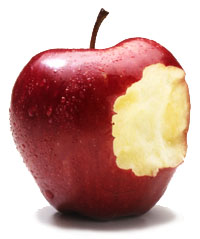THE IMPORTANCE OF FIBER

|
A number of patients have been coming into the office suffering from a variety of symptoms, all of which can be traced to a lack of fiber intake. Most were eating plenty of whole grains: bread, cereal and rice, but no one was eating enough fiber. What kinds of symptoms result from eating too little fiber? Most commonly I see constipation, acne, elevated cholesterol levels, headaches, hemorrhoids, chronically elevated liver enzyme systems, PMS and irritable bowel syndrome. You might ask how a lack of fiber intake can cause this wide array of symptoms. To understand the importance of this macronutrient, you first need to understand that there are two very diiferent types of fiber. The first type of fiber that comes to mind is the 'isoluble type'. This fiber, found in whole grains and vegetables, helps keep us regular and reduces the risk for colon problems from constipation and irritable bowel syndrome to colon cancer. This is the type of fiber your mother may have called 'roughage'. Water insoluble fiber is critical for the proper functioning of the colon. It ensures that the undigested and indigestible food moves quickly through the small and large intestines and does not stay in any one spot too long where it may irritate the lining of the intestines. It also binds up bile from the liver and gall bladder which contains oil soluble wastes such as excess hormones and pesticides residues. These need to be removed from the body through the bowels quickly or they will be reabsorbed and circulate through the body again before again being removed by the liver. The increase in body toxin levels can cause headaches and fatigue. The attempt by the body to remove excess levels of unwanted chemicals through the skin can cause acne and aggravate eczema. Since excess hormone levels are thought to be one factor in PMS and acne, as well as migraine headaches, these types of problems may be caused by a lack of insoluble fiber. Insoluble fiber is also important in treating any type of liver trouble from elevated enzyme levels to hepatitis. The second type of fiber is called 'water soluble' fiber and is found in oats, beans and certain fruit, especially apples. This is the type of fiber that binds up cholesterol and removes it from the body. It can help lower total cholesterol levels, reducing your risk for heart disease and it will reduce your risk for gallstones. Many nutrition experts believe that this may be the meaning behind the saying 'an apple a day keeps the doctor away'. Although not a cure for the flu, eating an apple a day may well prevent a visit to the cardiologist. A separate type of water soluble fiber called 'lignan' is now being studied because of its effect in lowering womens risk for breast cancer. The highest food source for lignan is flax seed meal. Whereas flax seed oil contains a full range of essential fatty acids which can help reduce allergy related problems and inflammations as well as reducing the risk for heart disease, it contains no fiber, or lignan. This lignan is the part that seems to be able to prevent breast cancer as well as reduce the risk for recurrence in breast cancer survivors. One theory about how lignans work is that they bind estrogen, helping to reduce circulating estrogen levels in a womens body. But, more than other fibers, lignans can also be changed by gut bacteria, absorbed into the body and affect cancer cells in a way that makes them less able to multiply. While the exact mechanism for this action is still being elucidated, taking some flax seed meal (ground whole flax seeds) in a bowl of oatmeal in the morning seems wothwhile for those with an elevated risk for breast cancer, along with proper diet and nutritional supplements. Total fiber intake is also important. A high fiber intake insures an even blood sugar level helping to prevent hypoglycemia and evening out blood sugar levels in diabetics. A high fiber intake also helps you to feel full longer on fewer calories, helping to maintain a healthy body weight. Heart disease, colon cancer, breast cancer. Diseases affecting 30% of all americans over age 50 which can be linked to a 'fast food' or 'westernized' diet. All are linked in one way or another to low fiber intake. The easy solution to all these problems is to eat more fiber. Ideally, you should try to get at least two servings of both water soluble and water insoluble fiber daily. This translates for most people into eating vegetables at both lunch and dinner every day, as well as having a snack of an apple and replacing sugary cereal with oat bran or oatmeal. It is also impotant to choose whole grain foods rather than breads and pasta made of white flour. For those with specific diseases, higher levels of intake are needed. And remember, to prevent fiber from becoming like cement in your gut, you must drink 8 glasses of water ach day. Supplements (such as psyllium seeds which contain both water soluble and insoluble fiber) are available, but food sources are the best choice for long term health. |
Dr. Brett is a naturopathic physician with offices in Stratford and Stamford, CT

Other health related articles on this site:
.
.
.
.
.
.
.
.
.
.
.
.
If you have a suggestion or health related article to submit, send it to:
Editor/viewzone.com
myristicin@hotmail.com